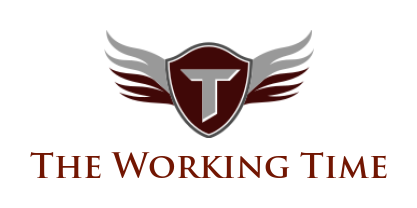Roasts that hurt has become a popular way to make people laugh—whether on stage, at parties, or online. It’s all about teasing someone in a way that’s supposed to be funny. But not all roasts stay playful; some can cut too deep and cause real pain. Understanding what makes a roast hurt is key to avoiding crossing the line. When does humor turn into harm? This article dives into the types of hurtful roasts, their effects on people, and how to keep humor fun and respectful.
The Anatomy of a Hurtful Roast
Understanding the Elements of a Roast
A good roast makes us laugh, but it also has some tricky parts. The tone, timing, and setting all matter. A sarcastic jab at a friend can be funny if everyone laughs, but it can also offend. Playful teasing depends on knowing what’s acceptable, not just what’s funny. How you say something is often more important than what you say. Delivery makes all the difference in how the joke lands—whether it’s sharp and clever or mean-spirited and hurtful.
Types of Roasts That Tend to Hurt More
Some roasts are more likely to cause pain than others. Personal insults, for example, target someone’s flaws or insecurities. These jokes often hit a nerve. Humorous exaggerations, like calling someone “the slowest runner,” might be less harsh, but even they can hurt if taken the wrong way. Topics that involve race, culture, or sensitive personal issues are risky. They can easily offend or hurt feelings because they touch on deep vulnerabilities. When a roast hits below the belt, it’s often because it unfairly targets someone’s insecurities.
Psychological Effects of Hurtful Roasts
Emotional and Mental Impact on Subjects
Being on the receiving end of a hurtful roast can cause real emotional pain. It can chip away at self-esteem or even spark anxiety. For some, it’s a quick joke; for others, it sticks with them. Media show us how public figures react to harsh jokes—sometimes with sadness or anger. Studies tell us teasing can hurt mental health, especially if it’s frequent or intense. A joke meant to be funny can leave someone feeling embarrassed or worse.
Long-term Consequences of Harsh Roasts
Repeated hurtful teasing can lead to lasting damage. Socially, it might cause someone to withdraw from others to avoid more pain. Anxiety, depression, and damaged reputation often follow harsh jokes. When teases stay just fun, they stay within limits. But when they become personal attacks, they can turn into emotional abuse. Knowing where that line is helps keep humor healthy and friendly.
The Role of Audience and Bystanders
A crowd’s reaction shapes how bad a roast feels. When friends support or defend someone, the hurt can lessen. But if bystanders laugh or egg on the roaster, the damage worsens. Audience reactions can encourage boundaries to be crossed or help keep things in check. Supportive spectators make it easier for the person being roasted to handle the joke or speak up if they’re hurt.
Recognizing When a Roast Crosses the Line
Signs that a Roast is Harmful
How can we tell if a joke just went too far? Watch out for language that’s explicitly hurtful or targets personal vulnerabilities. If the speaker seems unaware or uncaring of the damage, that’s a red flag. Also, if the joke involves inappropriate or sensitive topics and isn’t suited for the setting, it’s crossing into harmful territory. When someone looks uncomfortable or upset afterward, that’s often a sign the roast was too harsh.
Cultural and Personal Sensitivities
Every person or community has different boundaries. What’s funny in one group might be offensive in another. For example, jokes about religion, ethnicity, or personal history can be seen as respectful or deeply hurtful. Understanding and respecting these differences shows empathy and makes humor welcoming to everyone. Always ask: Are we making fun or hurting feelings? That’s a good rule to follow.
How to Avoid Hurting Others When Roasting
Tips for Responsible Humor
Use self-deprecating humor to keep things balanced—making fun of yourself begins the joke. Know your audience’s sensitivities. Focus on exaggeration or absurd ideas rather than attacking someone personally. Keep jokes fun and light, not cruel. If you’re about to say something that could hurt, pause and think: Is this necessary? Will this make everyone laugh, or just hurt?
Establishing Boundaries and Consent
When roasting friends or doing comedy, agree on what’s okay and what’s not. Respect cues that someone is uncomfortable. If they seem upset, back off or change the topic. Talk openly about boundaries beforehand so everyone feels safe. That way, humor stays a source of joy, not pain.
Responding to Hurtful Roasts
If you find yourself roasts that hurt after a roast, stay calm. Let the person know how you feel without getting angry. Sometimes, a gentle reply can fix misunderstandings. If you’re the one doing the roasting, listen if someone objects. Turning a hurtful joke into a respectful conversation shows maturity and respect.
Conclusion
Roasts that hurta fine line between witty fun and genuine hurt. When jokes target vulnerabilities or cross sensitive boundaries, they cause pain. It’s up to us to be aware of how humor affects others. Respect, empathy, and good timing keep roasting enjoyable and safe. Remember, humor should lift people up, not tear them down. By recognizing hurtful signs and setting clear boundaries, we create a space where everyone can laugh without feeling bad. Ultimately, responsible humor builds stronger, happier connections and keeps the fun alive.

